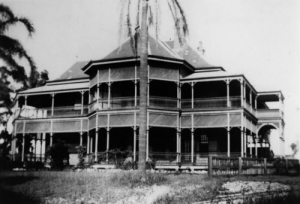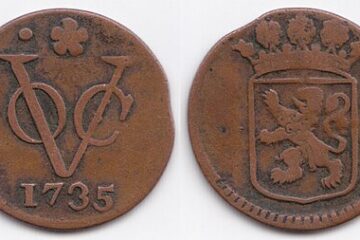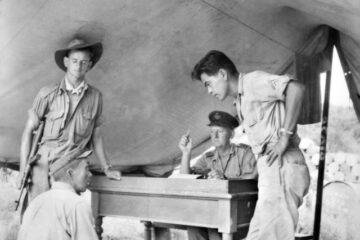The following information comes from the website Australia@War. This service provides more in-depth info on several aspects mentioned in this article and links have been provided to that information. Other links related to the Dutch activities are provided as well and point to information in the DACC data base.
Allied Intelligence Bureau WWII
On 6 July 1942 a General Headquarters Southwest Pacific Area directive established the Allied Intelligence Bureau. Its role was to “obtain and report information of the enemy … weaken the enemy by sabotage and destruction of morale and to lend aid and assistance to local efforts to the same end in enemy occupied territories.”
The Allied Intelligence Bureau was staffed by personnel from ten armed services from Australia, Britain, America, Netherlands East Indies and Asia. At its peak it controlled eight separate organisations broken up into the following four main sections: –
- Section A:- Special Operations, Australian Section – Later known as Special Operations Australia SOA
- Section B:- Secret Intelligence Service, Australian Section – Later known as Secret Intelligence Australia SIA
- Section C:- Combined Field Intelligence Section
- Section D:- Military Propaganda Section – Later known as Far Eastern Liaison Office FELO
In relation to the Dutch history the Sections C and D were the most important.
Section C of the Allied Intelligence Bureau
This bureau initially comprised the following sub-sections: –
- North-east Area – mainly Coast Watch Organisation later called Combined Field Intelligence Service
- Philippines (the Philippines Regional Section was later established as a separate section)
- Netherlands East Indies Forces Intelligence Section NEFIS (Division III later became a separate section). Netherlands East Indies Forces Intelligence Section NEFIS comprised three sections: –
- Section I – General Intelligence
- Section II – Security
- Section III – Special Intelligence and Special Operations
The unit did not officially adopt the term NEFIS until 1 April 1943. The origins of NEFIS were from Marine en Leger Inlichtingen Dienst (MLID) (Navy and Army Intelligence Service) that had been established as a Dutch intelligence organisation in Australia from March 1942).
When sufficient Dutch personnel became available, the Netherlands East Indies Forces Intelligence Section, Division III (NEFIS III) was established as a separate section of AIB.
The first Commanding Officer was Lieutenant-Commander J.J. Quere under the supervision of Captain Lieutenant-at-Sea G.B. Salm. The Dutch provided a few old submarines and injected money in the operations. NEFIS III worked closely with Secret Intelligence Australia (SIA) which was Section B of the Allied Intelligence Bureau.
NEFIS III had its headquarters at 225 Domain Road, South Yarra and later moved to Camp Columbia in Brisbane.
NEFIS III concentrated on economic and political information for use after the war had ended. Some Dutch guerrillas were known to have worked in the Vogelkop Peninsula in New Guinea for a period of time.
Section D:- Military Propaganda Section

Naval Commander John Proud relocated Far Eastern Liaison Office (FELO) – or Military Propaganda Section – from Melbourne to Brisbane where he commandeered a house called “Kirkston” in Rupert Street, Windsor. There were a number of fibro huts erected in the grounds of the villa.
They were responsible for: –
- Preparation of propaganda material useful to the other sections and initially for dissemination by them to lower the morale of the Japanese forces.
- Misleading the Japanese regarding our military intentions.
- Influencing the New Guinea native populations so they would impair the Japanese war effort and assist the Allies.
Group Captain C.C. Bell RAAF was appointed Deputy Controller of FELO. He set up Camp Tasman at Indooroopilly in Brisbane where they created leaflet propaganda.

Robert Ian Caporn was a Signals Sergeant in FELO from mid 1943 till the end of the war and he mentioned that at his time at Kirkston there was Dutch personnel, stationed, predominantly from the Netherlands East Indies (NEI).


